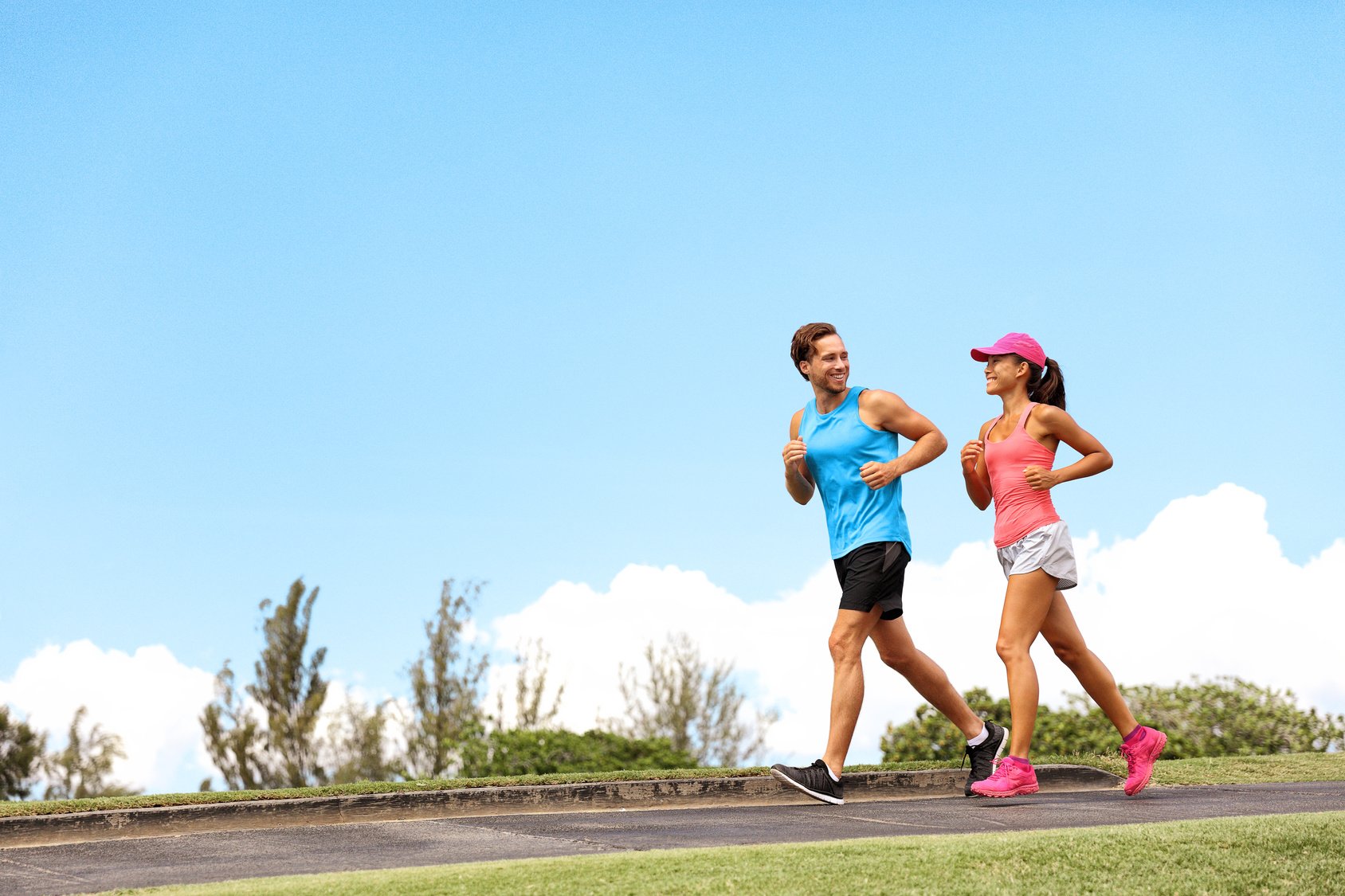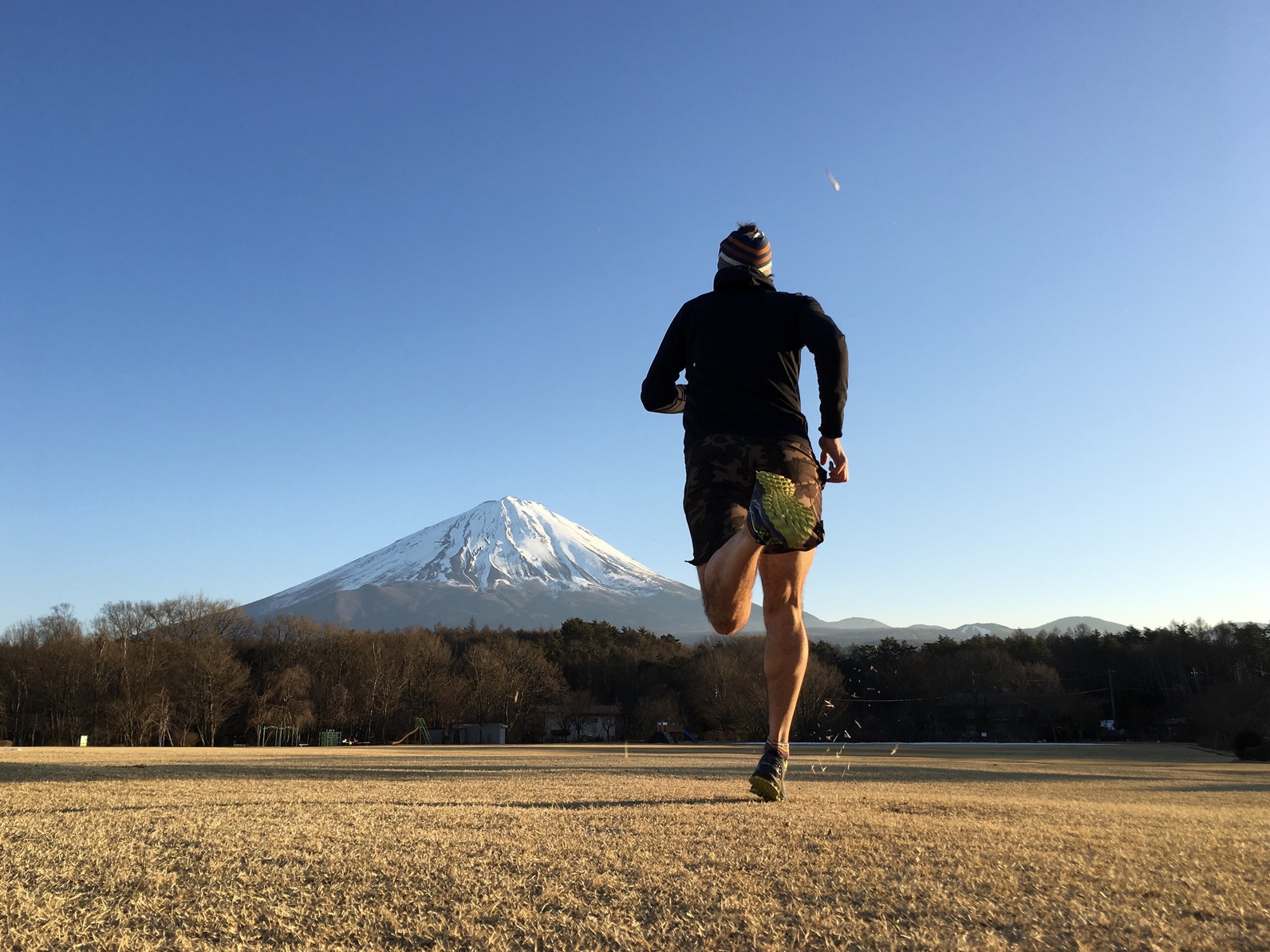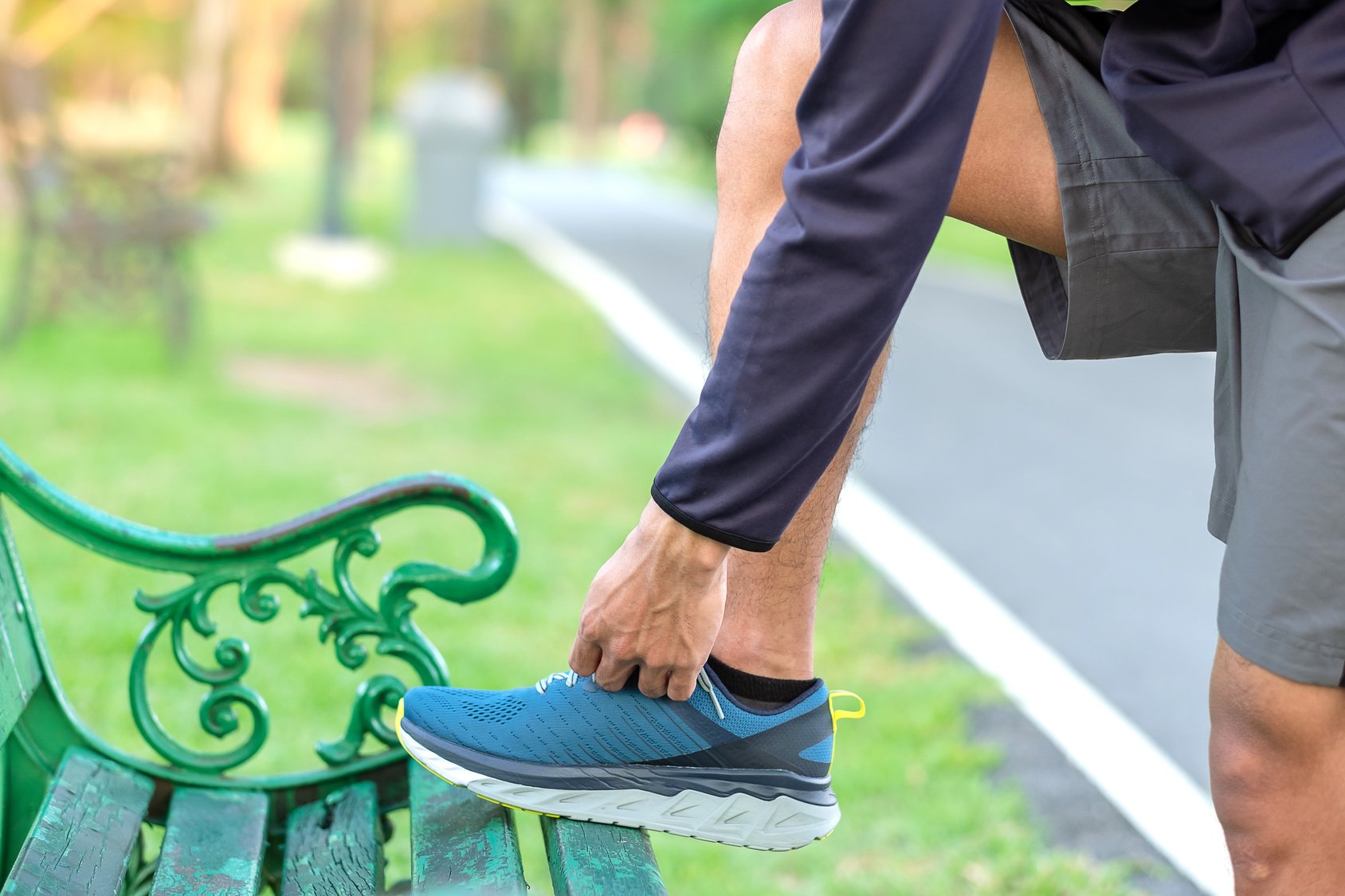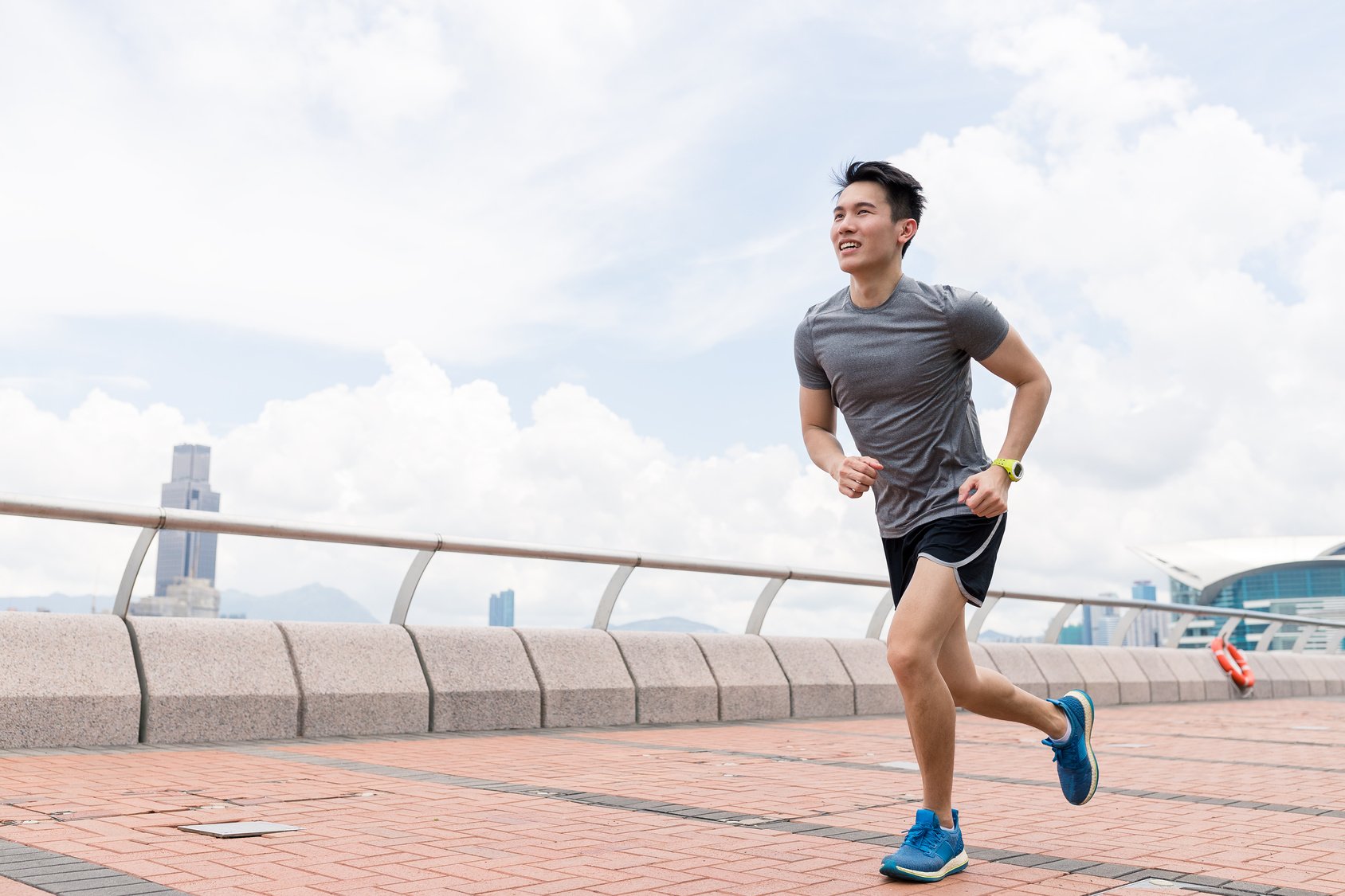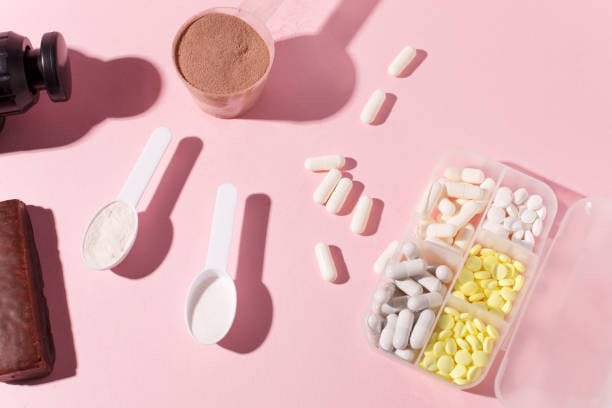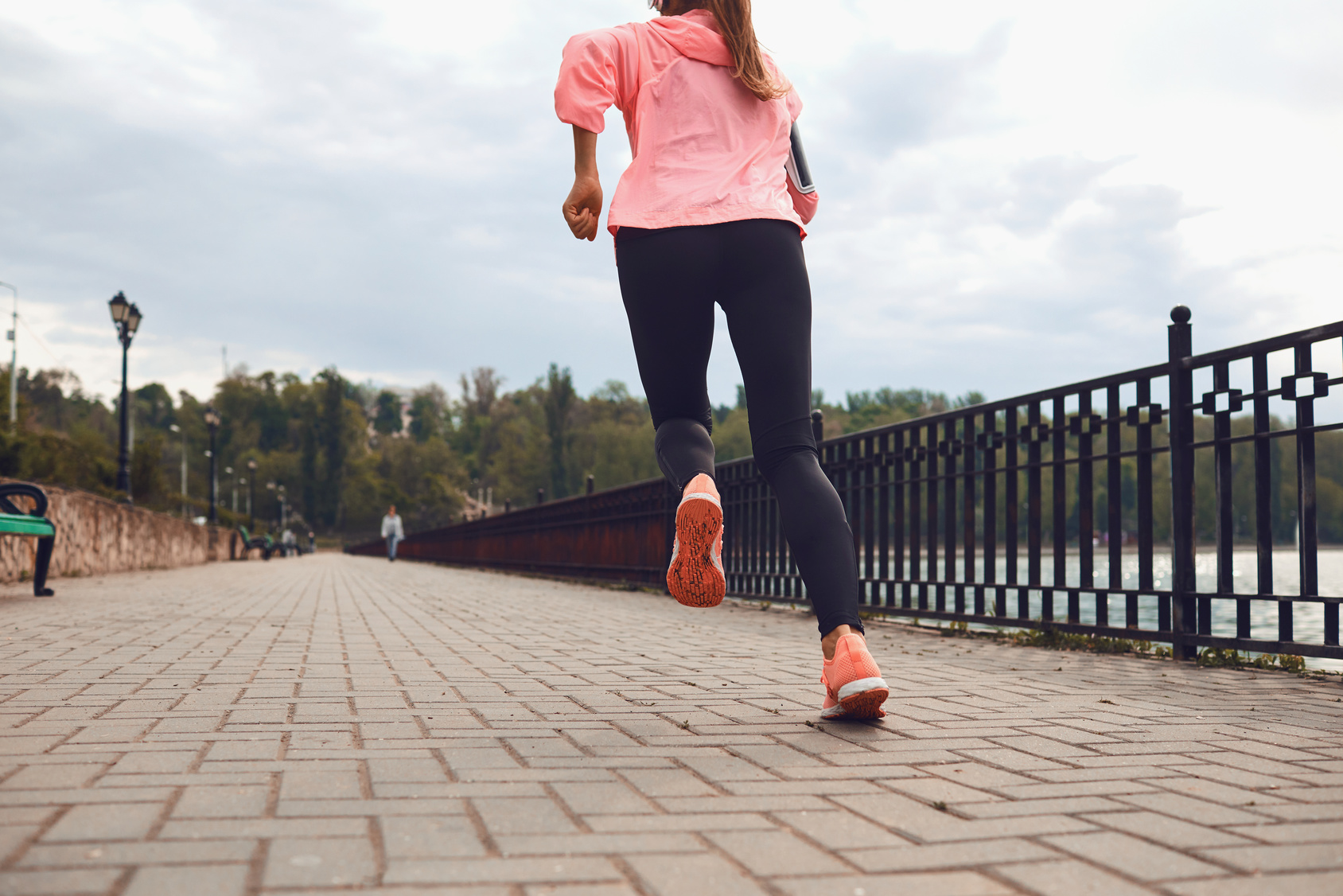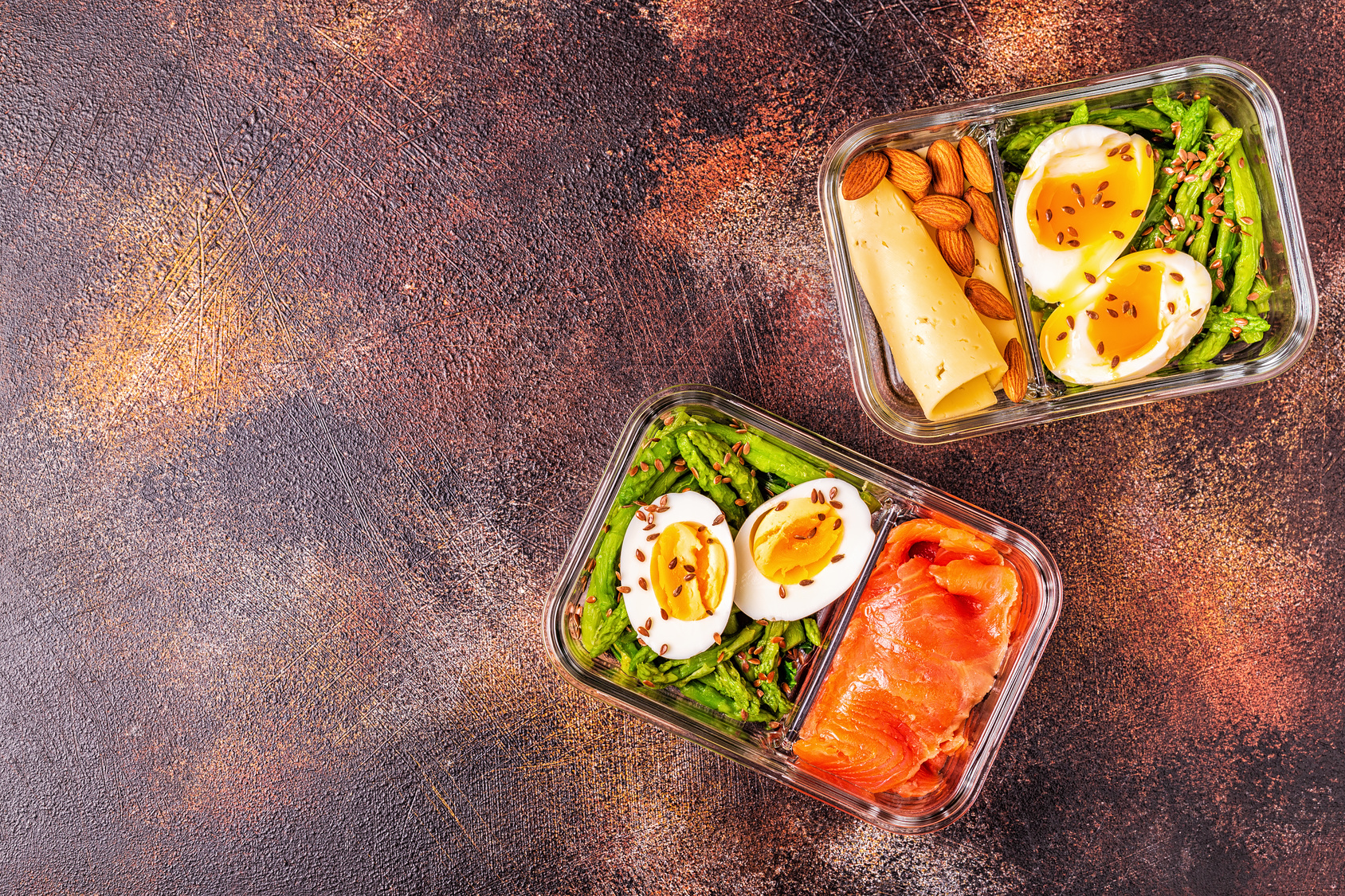Yes, you can run a marathon on keto—but let me be real with you, it’s not as easy as just swapping your pasta for bacon and going out to crush 26.2 miles.
I’m David Dack, a running coach based in Bali, and I’ve taken the keto path myself.
I’ve coached runners through it too.
There are wins, there are struggles, and there are moments you wonder why you ever gave up carbs in the first place.
So let’s dig into it. I’ll walk you through how keto works for runners, how to train and fuel smart, how long it really takes to adapt, and whether it might be a fit for your next race goal.
What Is the Keto Diet for Runners?
Quick breakdown: Keto is high-fat, moderate-protein, and very low-carb.
It’s like Atkins but stricter.
You drop your carb intake so low (usually under 30 to 50 grams a day) that your body runs out of glucose and starts producing ketones from fat. This state is called ketosis.
Your fuel source flips. Instead of burning carbs, your body starts burning fat—which is a pretty big shift, especially for runners who grew up on bananas and bagels before long runs.
A typical keto diet might be:
- 70-75% fat
- 15-20% protein
- ~5% carbs
So goodbye oats, pasta, potatoes, and sports gels. Say hello to eggs, olive oil, avocados, meat, nuts, and leafy greens.
Staying in ketosis means keeping carbs low—really low. One banana can use up your full carb allowance for the day. Even sneaky carbs from sauces or drinks can knock you out.
And if you do get knocked out? Your body needs to reset all over again.
Ketosis vs. Fat Adaptation
Don’t confuse the two. Ketosis can happen in a few days. But fat adaptation takes weeks.
Fat adaptation is when your muscles actually get good at using fat and ketones as fuel. That takes consistent training on keto and a few weeks (sometimes months) of patience. Until then, you might feel sluggish or crash halfway through your long runs.
Trust me—I’ve been there. Early keto runs were brutal. Legs like lead. Zero pep.
But once I broke through? That steady burn kicked in, and I could go for hours without the usual crash.
Why Runners Try Keto for Marathon Training
Now let me share a few reasons why some runners go on the ketogenic diet despite its of lack carbs:
You Tap into a Giant Fuel Tank
Carbs run out fast. Your glycogen stores only hold about 1,800–2,000 calories—that’s maybe 90 minutes to two hours of running. That’s why runners use mid-race energy gels and drinks.
But fat? Even lean runners have 30,000+ calories of fat stored.
So if you teach your body to burn fat? You don’t hit the wall the same way. It becomes about pacing, not panic fueling.
The 2016 FASTER study by Jeff Volek looked at elite ultrarunners. Those on long-term low-carb diets burned fat at twice the rate of their high-carb peers. They even had similar glycogen stores before and after a 3-hour run.
That means their bodies were still able to recover and store some glycogen—without hammering carbs.
Weight Loss Without Obsessing
Many runners come to keto looking to lose some extra weight. With all the long miles, it’s easy to feel starving all the time and end up overeating carbs.
Keto helps curb that. High fat and protein make you feel fuller. And because you’re not riding the blood sugar rollercoaster, you don’t get hangry as often.
Personally, I dropped 12 pounds in my first month on keto. Sure, some of that was water weight, but my belly trimmed down, and my running got lighter.
Less weight = less pounding.
Science backs this up. Studies show keto can cut belly fat, preserve muscle, and improve overall body comp—especially when combined with cardio training.
Stable Energy & Clearer Thinking on Keto
One of the biggest draws of keto? You don’t crash like you do on a high-carb rollercoaster.
Runners who stick with it often say they feel more stable all day—no sugar highs, no bonks, no panicked need for a gel every 30 minutes.
It’s like switching from a sports car to a diesel truck—slower to rev, but it’ll keep going longer.
In my own keto trial, once I got over that brutal first week, I could head out for a sunrise run with just coffee in my system and not feel like I was about to faint by mile two.
No toast, no banana, no gel—just legs and fat stores. There’s a weird confidence that comes with that. You’re not worrying if breakfast was big enough. Your body’s ready to tap into that fuel reserve it’s been ignoring for years.
Some runners say they also feel mentally sharper on keto. It’s not magic—it’s biology. Ketones have been studied for their effect on brain health (they were originally used to help with epilepsy), and they can make your brain feel calm, steady, maybe even a little dialed in.
I remember during long, easy runs, I felt like I could think clearly without the usual background noise. My head wasn’t spinning about pace or splits—I was just there, in it. Not hyper. Not distracted. Just running.
There are also a bunch of other possible perks that don’t necessarily make you faster—but might make your training smoother:
Less inflammation: Some research hints that keto might lower inflammation markers. That could mean fewer sore days and faster recovery.
Better metabolic health: Improved insulin sensitivity and blood sugar control aren’t just for diabetics. They matter for how your body handles long runs too.
Bonus health wins: Some studies show better triglyceride levels, improved HDL cholesterol, lower blood pressure, and even better fat-burning enzyme activity in muscles. (Dr. Stephen Phinney and Dr. Jeff Volek have some solid papers on this.)
But—and this is a big but—don’t take all those claims as gospel. The science is still catching up. A lot of what you hear comes from small studies or anecdotal reports.
As a coach and runner who has done keto, let me be clear: don’t believe everything you hear on a podcast or forum.
If someone tells you you’ll “run forever and never hit the wall,” run the other way.
You know what I always say? “If it sounds too good to be true—and needs a hashtag—it probably is.”
The Ugly Side of Keto Running
Okay, let’s talk about the part most keto influencers gloss over.
Because keto ain’t all buttery coffee and miracle long runs. If you’re a runner thinking of ditching carbs, you need to understand the downsides.
Here’s what I tell my athletes before they chuck their oatmeal and order grass-fed liver:
1. The Keto Flu Is Real—and Rough
When you drop carbs, your body kind of freaks out. It’s like, “Wait, what happened to my favorite fuel?” That freakout is what we call the keto flu.
I’ve watched athletes go through it. I’ve gone through it. It’s not pretty.
Symptoms might include:
- Feeling foggy or forgetful
- Headaches that sneak up out of nowhere
- Stairs suddenly becoming Everest
- Feeling irritable or straight-up hangry
- Muscle cramps, sore legs
- Trouble sleeping
- Nausea, upset stomach
- Dizziness
- Constipation (no carbs, no fiber = backed up)
Basically, your body’s trying to switch gears from burning sugar to burning fat, and it’s not happy about it.
Your brain’s addicted to glucose. Your muscles are used to glycogen. Your bathroom habits go weird.
Welcome to the adjustment phase.
For most folks, it lasts 3–7 days. Some get off easy. Others, like me, get steamrolled.
I planned my transition during an off week in training—and thank god I did.
On Day 3, I went out for a 5K jog and it turned into a 2-mile death march. I ended up lying on the pavement, sweat pooling under me, asking myself what kind of idiot tries to run without carbs.
But here’s the trick: electrolytes.
Most of what you’re feeling isn’t just “keto flu”—it’s dehydration. Carbs hold water. When you drop them, your body dumps a lot of fluid and flushes out salt, magnesium, potassium. That’s why you’re dizzy, cramping, tired.
Fix it by doing this:
- Add more salt to your food
- Sip water all day, not just during runs
- Try electrolyte tabs or a mix like LMNT or Nuun
- Go easy on the workouts (no hill sprints!)—stick to walks, light yoga, or slow jogs
By Week 2 or 3, most runners start feeling human again. I remember waking up on Day 4 and feeling… better. My legs worked again. My brain wasn’t foggy.
I felt like, “Okay, I can do this.”
If after a couple weeks you’re still struggling? Keto might not be your game. And that’s okay.
2. You Will Get Slower at First—Expect It
This is the one most runners underestimate. You’ll slow down when you start keto.
Full stop.
Here’s why: Your muscles are missing their go-to fuel (glycogen), and they haven’t learned how to burn fat efficiently yet.
Until they do, everything feels harder.
That nice and easy 6-mile loop? Suddenly it’s a slog. Your heart rate’s higher. Your legs feel flat. Workouts feel like you’re dragging a tire behind you.
This isn’t just bro-science—it’s backed by studies.
Louise Burke and her team ran a now-famous study where elite athletes went keto for a few weeks. Their fat-burning improved—but their race times didn’t.
In fact, their 10K performance dropped while the high-carb group improved by about 6%. They also said the effort felt harder at the same pace. That matters.
From my own experience: it took me a couple of months just to feel like I wasn’t dragging during regular runs.
Interval workouts took another month to get back to pace. And even then, really hard efforts still felt a notch tougher than before.
Now, endurance-wise, I did adapt. After two months, I could run 90-minute efforts again without fuel. But sprinting? Finishing kicks? 400m repeats? Those were a struggle.
That’s why I always tell my athletes:
Do NOT go keto mid-race cycle. Save it for the offseason or a base-building phase where you can afford to slow down.
I know this is a hard pill to swallow, but I cannot deny the truth.
If your race is in 4–6 weeks, just don’t. You’ll be sabotaging yourself.
And even if you do adapt, keto might never be great for max speed. Explosive power—like what you need in a 5K or short race—runs on carbs. If you’re chasing PRs in fast events, full keto might hold you back.
Training for your first marathon? Forget about keto diet.
But if you’re training for ultras or long, steady endurance work? Keto can make sense if you’re willing to suffer through the early dip.
3. Muscle Loss (If You’re Not Paying Attention)
Let’s get real—keto can shred fat, no question. But here’s the catch: if you’re not careful, it can strip off muscle too.
That lean, hard-earned strength you need for strong form and injury prevention? Gone in a flash if you’re under-eating or skimping on protein.
My first month on keto? Dropped weight fast. The scale looked great… but my quads didn’t. They looked flatter, softer.
Turns out, I was loading up on fats and barely hitting my protein needs. Rookie mistake.
When you cut carbs and crank up the mileage without giving your body enough protein or total calories, it starts looking for fuel anywhere it can. And guess what’s next in line after fat? Yep—your own muscle, thanks to a process called gluconeogenesis. Your body basically breaks down muscle to make energy.
As a runner, that’s bad news. We’re not trying to be bodybuilders, but we need muscle—especially for hills, sprints, and keeping good form when we’re tired.
These days, I make sure I get around 0.7 to 0.8 grams of protein per pound of bodyweight, even if that throws off the classic keto macros a bit. It’s worth it to protect the gains.
I also kept up three light strength sessions a week—think bodyweight moves and some kettlebell swings. Nothing fancy. But it sent a signal to my body: “We still need this muscle. Don’t burn it.”
4. Your Top-End Speed Might Take a Hit
Let’s talk power and speed—those sharp bursts you need in a race finish, track repeat, or hill sprint.
On keto, that top gear might be a little harder to reach.
Here’s why: research (including work by Louise Burke) suggests low-carb diets can hurt your VO₂ max and make you less efficient at high-intensity efforts. Even well-adapted keto athletes showed higher oxygen costs at race pace—basically, they were working harder just to hold the same speed.
And I’ve felt this in my own training. On carbs, I could hammer out 6:30 miles in intervals. On strict keto? Suddenly, 6:45 felt like a grind.
Not the end of the world—but a noticeable change. Especially if you’re training for races that involve high-intensity surges, this matters.
Some athletes combat this by timing small amounts of carbs around intense sessions. A banana or a few bites of rice 30 minutes before a track workout isn’t “cheating”—it’s smart. It keeps your anaerobic gear intact.
There’s also talk about metabolic flexibility—your body’s ability to switch between burning fat and carbs. Strict long-term keto might dull that ability. Anecdotally, runners report feeling heavy and foggy when reintroducing carbs after a long break. I’ve had a few sweet potato crashes myself.
5. Social Life Takes a Hit
Forget the science for a second—this part is personal. Keto can feel lonely in a runner’s world.
Think about it: team pasta dinners, post-run beer and pizza, aid stations packed with gels and sports drink… and you’re reaching for beef jerky and olives like a weirdo.
Even at home, it’s a struggle. My girlfriend would cook up some killer fried rice or tropical smoothies here in Bali, and I’d have to politely pass.
Let me tell you, nothing kills the vibe like pulling out a Tupperware of eggs while everyone else has cake.
That’s why I say: Keto only works if you can stick with it. Consistency beats perfection. If it’s causing too much friction in your life, your body’s gonna pay for the mental stress and back-and-forth.
Personally, I eventually shifted to a more relaxed low-carb setup. Still low in sugar, still mindful of starches—but not religious about macros.
It let me enjoy food again, without sabotaging progress.
6. Some Bodies Just Don’t Mesh with Keto
This is the truth no keto influencer will admit: it doesn’t work for everyone.
I coached a runner—let’s call her Jane—who gave keto a serious shot. Tracked macros, stayed hydrated, nailed her electrolytes. But her pace never bounced back. After 8 weeks, she was still off by a full minute per mile and felt fried after 60 minutes.
We reintroduced some clean carbs (fruits, sweet potatoes), and boom—her energy came roaring back. Keto just didn’t suit her physiology.
That doesn’t mean keto is bad. It just means your body has a say, too. Genetics, hormones, stress levels, and training load all factor in. Some folks crush it on keto. Others crash and burn.
You’ve gotta test it, then decide.
If you’re dragging every workout, sleeping like crap, and hating every meal—it’s okay to quit. There’s no badge for suffering. Find what works for you.
Cravings Hit Hard
Picture this: You just crushed 18 miles. Your crew’s at the diner inhaling pancakes. You’re poking at an omelet.
That moment tests your will. I handled it by leveling up my post-run meals. Big omelets with bacon and cheese. Full-fat Greek yogurt with a few berries. It’s not pancakes, but it’s good enough. And it made the diet stick.
Taper Week: Stick with Keto or Bump Up the Carbs?
In the running world, the week before a marathon usually means carb overload. We’re talking pasta dinners, bread baskets, and oatmeal for days.
But if you’re keto, that’s not the move.
You’ve got a few paths here:
1. Straight Keto Taper
Just stay the course. Keep eating clean, high-fat, low-carb meals like you normally do. Maybe bump up the fats slightly to make sure you’re eating enough.
You’ll toe the line in full fat-burning mode. Your glycogen stores won’t be maxed out—but if you’re well-adapted, that doesn’t matter much.
You’re running steady, not sprinting.
2. Small Carb Bump Before the Race
Some keto runners sneak in a little extra carb the day before—maybe 50 to 100 grams from something easy like a sweet potato, banana, or some rice.
Not a full-out carb fest. Just a gentle nudge to top off liver glycogen (so you don’t bonk before sunrise).
If you’ve been strict keto, test this in training. I’ve seen it go both ways—some folks feel great, others get bloated or crash from the insulin spike.
3. Go Full Carb Load (The CKD Route)
This one’s not for the purists.
You jump out of ketosis before the race, do a proper carb load, and race like a high-carb athlete. You’re basically using keto in training to become fat-efficient—then flipping the switch on race day to burn carbs like rocket fuel.
Some elite low-carb athletes do this, like Jeff Browning. He trains low-carb but doesn’t shy away from carbs during ultras.
That said, if you’re not used to carbs, you could wreck your gut mid-race. Proceed with caution.
What I Did:
I mostly stuck to keto during taper.
Two days before race day, I added a few higher-carb veggies—like a serving of pumpkin, a few carrots—and an electrolyte drink that had about 15g sugar. So maybe 40–50g carbs that day.
The night before, I ate a big salad with avocado and grilled fish, plus a small scoop of steamed sweet potato. Probably hit 80g total—not crazy, just a little extra.
The next morning, I was still showing moderate ketones, so I knew I hadn’t fallen out of ketosis.
Race Morning: Don’t Force the Pancake Breakfast
One of my favorite parts of racing keto? No more stuffing myself with pancakes and bananas before the start.
Here’s what most keto runners do:
- Some go full fasted. Just coffee, salt, maybe MCT oil. That’s it.
- Others like “fatty coffee” – butter or MCT blended into coffee with a light bite (like an egg).
I took the middle ground: 2 eggs scrambled in butter, half an avocado, and a small cup of bulletproof coffee. Roughly 400 calories, barely 5g of carbs. I ate this about 3 hours before the gun.
No hunger, no crash, no bathroom drama.
Don’t skip your salt. Seriously. I drank half a liter of water with electrolytes right after waking up. Also popped 300mg magnesium the night before.
When you’re keto, your body doesn’t hold water the same way, and you’ll start that race already low unless you plan ahead.
In-Race Fueling on Keto: What Actually Worked
Here’s where things get spicy—because there’s no single right answer. Some keto runners go full fasted and take in nothing but salt. Others, like me, add in a bit of carbs without overdoing it.
1. Zero-Carb Route
You rely entirely on fat, water, salt, and maybe MCT or ketone supplements. Some even pack bacon strips or nut butter packets. Yep, bacon. It works for some ultrarunners.
The upside? Steady energy, no blood sugar spikes.
The downside? No “turbo button” if you need to surge late in the race. And digesting fat while running is no joke—especially if your gut isn’t used to it.
I’ve done long training runs fueled by almond butter cookies. Worked fine for a while, but by mile 18? I was begging for something simpler.
2. Hybrid Approach (My Favorite)
This is what I did for the race. A little bit of carbs—maybe 20–30g per hour—mainly through sports drinks and one gel at the halfway mark.
That’s about one-third of what I used to take back in my high-carb days.
Why even take carbs if I’m fat-adapted? Because a marathon is still a beast. At race pace, even keto runners can dip into low blood sugar. A small bump of carbs keeps things steady and sharpens your brain when you start zoning out at mile 20.
Zach Bitter, who literally holds a 100-mile world record, uses around 40g/hour during races—so I figured 20–30g was plenty for me.
What I Took:
- 5g carb from electrolyte drink every aid station
- One gel at hour two (20g carb)
- Total carb intake: around 60–70g for a 3.5-hour marathon
Result? No crash. No bonk. I actually felt better in the last 10K than in some of my past carb-heavy races.
My legs were toast, sure. But my head was clear. I wasn’t desperate for sugar. I even got a little emotional in the final stretch—clear-headed and proud, not dizzy and wrecked.
But to be honest that wasn’t my best race – not even close. No PRs that day but it was a fun event nonetheless.
Salt Is Your Savior
Whatever your fuel plan—don’t forget sodium. I carried salt pills in a baggie and popped one every 45 minutes. No cramping. No bonk.
On keto, you need salt more than the average runner, since we flush it out faster. Throw in a little magnesium and potassium too, but sodium is the king here.
What About Caffeine?
Go for it. Caffeine works on keto just like it does with carbs—maybe even better. It can help you tap into fat stores and keep you alert when your legs want to quit.
I saved my caffeinated electrolyte drink for the second half, and it gave me a solid boost.
During the Race: Listen to Your Body, Not Just Your Watch
Running a marathon on keto isn’t just about fueling differently—it feels different too. You’re not crashing from a sugar high, but you still need to stay alert to the signs your body throws at you.
Here’s what I’ve learned the hard way:
The Slow Fade
You might not bonk the traditional way, but if you start feeling like you’re gradually running on empty—like your engine’s still on but barely—it’s probably a fuel issue.
For me, when that happened around mile 18, I took in a tiny hit of carbs and felt the difference.
Doesn’t mean you’re broken—just need a little bump.
Cramping Up? That’s a Warning Shot
At mile 20 of one of my keto races, my left calf gave me a little spasm. Not full-on cramp, but a “Hey, don’t ignore me” moment.
I popped a salt pill and kept going.
That was my reminder: electrolytes are non-negotiable on keto. If you feel a twitch, don’t wait.
Gut Check
One of keto’s perks? Your stomach isn’t drowning in gels.
I didn’t have any of that gross sloshy feeling in my gut. My stomach was calm from start to finish.
But I’ve seen runners get queasy if they go heavy on fat or protein mid-race—those digest way slower. Sometimes it’s dehydration too. Either way, be ready to adapt.
I skipped a nut butter pack once when I felt weird, and that probably saved my day.
Steady Mind, Slippery Motivation
Here’s something no one tells you: without the carb rollercoaster, your brain stays chill.
Maybe too chill.
I never had that mid-race freak-out moment like I do sometimes when I miss a gel. But I also had to remind myself to push.
At mile 23, I gave myself a mental slap—“You’ve got fuel left. Time to dig.”
That even-keel energy is great, but don’t let it lull you into cruise mode.
Stay in the fight.
Crossing the Finish Line—Fueled by Fat (and Maybe a Bit of Stubbornness)
When I hit that final stretch, it wasn’t my fastest time ever—but man, it was controlled.
I didn’t stumble to the banana table like a zombie. I remember thinking, “Wait, is that it?”
I craved salty broth, not sugar. No crash. No regret.
Afterward, yeah, I had carbs. Big coconut water, rice at dinner—earned it.
That didn’t undo my fat-adaptation. The race was done. The work was done.
Refueling after isn’t cheating—it’s smart.
Funny enough, I heard a story on Reddit from a guy who ran his marathon on keto and only lost 1kg compared to the 2–3kg he’d usually drop with a carb-heavy race.
Makes sense. Glycogen holds water. Burn fat instead, and you hold on to more hydration.
I noticed the same—no gaunt, sucked-dry look in the mirror post-race. Felt like I still had gas in the tank.
This experiment taught me to respect both fat and carbs. More than anything, it reminded me that there’s no one-size-fits-all solution.
The internet loves extremes. Real runners just want to get stronger.
If you go keto for your marathon, do it for you. Not for the hype. Not to prove a point.
And if it doesn’t work, no shame in pivoting. Take what helps and leave the rest.
You might find that you don’t need six gels anymore—or maybe you just really like how coconut oil makes your coffee taste.










